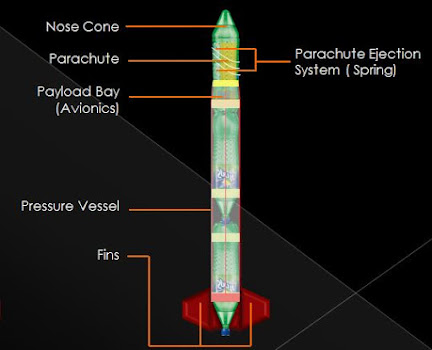WHY MODERN SPACECRAFTS USES OLD PROCESSORS??
Actually “space is a hellish place for CPUs” because of a lot of radiation, very high and very cold temperatures, and also it should face a lot of vibrations during its travel to space so the chip should be highly reliable and durable.
Radiation is the main villain, even though we can protect the chips from the alpha radiation(radiation in the form of nucleus of helium) with the help of protective layers but the main concern is the ionized hydrogen radicals(just free protons) and high energy electrons which are ejected from our Sun. This causes the ionization of a single oxide molecule in the semiconductors, even though it won’t damage the computer quickly but as time passes all the small effects get integrated and it causes total failure for the computer. But when the spacecraft started to experience cosmic and gamma rays (highly energetic) then things get even worse.
This exposure with ultra energy radiation can cause localized ionization which results in an unexpected flow of current. In the case of a lower energy event, this may result in a “single event upset” or “bit-flip”(if your program has “1” then that will be converted into “0”, it is not a good thing right?). The worst-case “single event burnout”, which creates such high currents that the very circuitry itself is burned out almost instantaneously.
So, if a chip wants to go to space then it should be ready to fight against all these things, but the problem is making a radiation-hardened chip work in these harsh conditions takes a “lot of time” and it is “highly expensive”.
Let me give an example, Perseverance uses RAD750 computer which is manufactured by BAE systems and it is just a radiation-hardened version of PowerPC 750 designed by IBM and it is especially used in Apple’s G3 iMac. That machine was launched in 1997 but the radiation-hardened version I mean the RAD750 was released in 2001 which took almost 4 years. But the first time it was used was in 2005 for Deep Impact comet-chasing spacecraft. The cost of RAD750 in 2020 is $287,771, the high price is mainly due to radiation hardening revisions to the PowerPC 750 architecture and manufacturing, stringent quality control requirements, and extended testing of each processor chip manufactured.
So making a chip suitable for space conditions and putting it in a spacecraft approximately takes 10 years. So whenever we are using a chip for space application at least it would be a 10-year-old model.
When it comes to space application reliability is highly important, so we will always try to find chips that have more successful flight records because we don't want to take risks with unproven newer ones especially when you are doing a billion worth of projects :)
Processors used 10 years back are indeed slower than the latest processors, in space tech, we highly focus on whether the chips are apt for the mission and not on whether they are latest and powerful because they don’t want to be like that, the main concern is it should not be less powerful than the mission requirements. But updating the chips is also needed, especially spacecraft which works for a long time. The best example is the Hubble space telescope in which the instruments are updated in the servicing missions.






Comments
Post a Comment